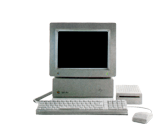Russian Apple Museum or 'the eBay Black Hole to be Found in Moscow'
I was planning on writing a blog dedicated to all the retro computing museums I've visited in my travels across Europe at the end of my travels (which I still hope to do) but I hit a problem: one such museum was too good not to write about straight away. If you've ever lost an auction on eBay for Apple stuff, I think I found where it went!
In my usual search across the interwebz to find interesting news regarding classic computers, I came across an article about a Russian Apple Museum based in Moscow. Interesting news in-itself, I thought, and then the photos came - this wasn't just a small quickly thrown together collection of yellowed Apple computers, this was an amazing chronological, clean, working and fully software installed demonstrative curated lot of Apple II, Macintosh and Newton computers.
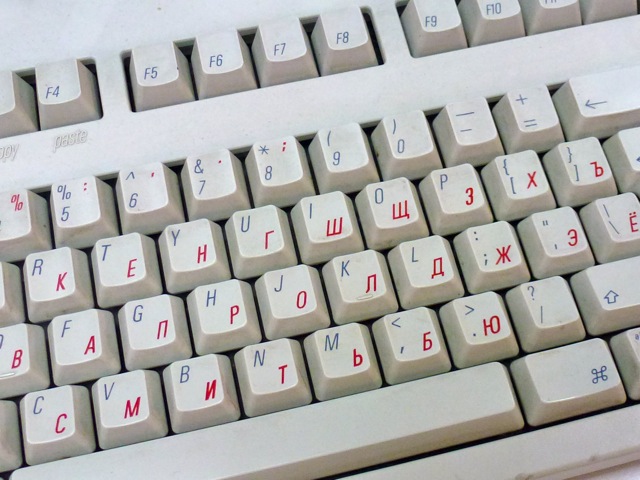
We only had three days in Moscow before boarding the Trans-Siberian train to take in the experience of travelling by rail days at a time, making new travelling companions (hello Svetlana!) stopping off in Irkutsk and to see modern and traditional Mongolia, before arriving in Beijing some 2 weeks later. Three days in St Petersburg had proven not quite enough, and the same was true of Moscow, although we did see the crucial sights - Red Square, Lenin's Tomb (although obscured by the stage of a laser light show and renovations), St Basil's (outside and in), The Eternal Flame, The Kremlin (inside and out), The Cosmonauts Museum (outside only), the All Russian Exhibition Centre, Old Arbat Street, The Izmailovo Markets (buying lots of Soviet era badges) and impressive surrounding area (which just happened to be right next to our hotel, built for the 1980 Olympics). All the while I had wanted to see this Apple Museum and fortunately, we could find just enough time to fit it in.
We arrived via the Metro - many (but not all) of the stations are incredible points of interest in themselves, showcasing the grandeur of Stalinism but also what hopefully boasted morale among the people during the second world war, or as it's known in Russia, the ‘Great Patriotic War'. After walking the remaining distance, we arrived at an office block with a front desk and I figured if I just asked for the Apple Museum, the receptionist would know what I was after despite not asking in Russian. Sure enough, he told me how to get around the corner in Russian, but really his well rehearsed gesturing was all that was required.
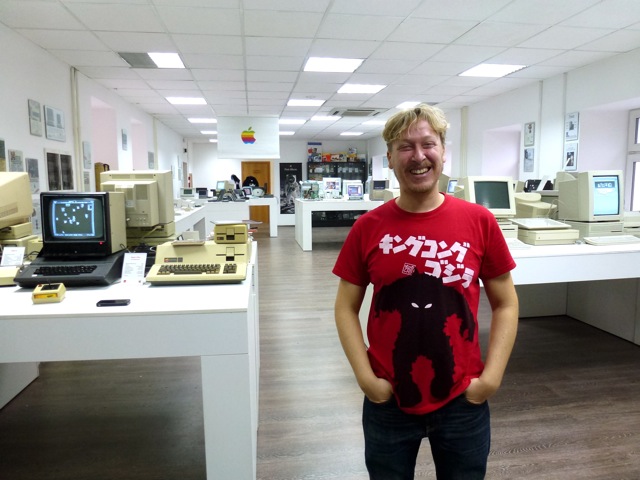
Bronwen and I entered the museum with excitement (well, perhaps me more than her, despite her recent ‘conversion' to the Apple fold), as the exhibition sprawled out in front of us in style. As we approached, I could see the curator, Andrey Antonov, at the very opposite side of the room. In my best Russian, I announced ‘Privét' / Привет / Hi!. Andrey had probably already guessed by now that we weren't in fact locals and had maybe entertained the thought that we entered by mistake. But I knew we were somewhere special.
We each paid 200 rubles for admission to Andrey and while he apologised for his English, as ever, it was always better than how we could communicate in the native language of the countries we visited. Andrey encouraged us to explore and ‘touch!', which I love: this isn't a museum behind glass cabinets. Each and every machine on display is working and you can play with every one. I first started playing with an original 128k Mac, loaded with MacPaint from the floppy drive. I was impressed by the number of desk accessories that were also loaded and smiled when the 3.5" disk was accessed as I loaded the Note Pad DA. Andrey encouraged me to print as there was an ImageWriter I printer connected and ready to go. Rather than print the example image that another visitor had left, I decided I'd better move on to more unique pieces - I do own an original Macintosh myself back in Australia after-all, although I don't have any of the original bundled software to play with.
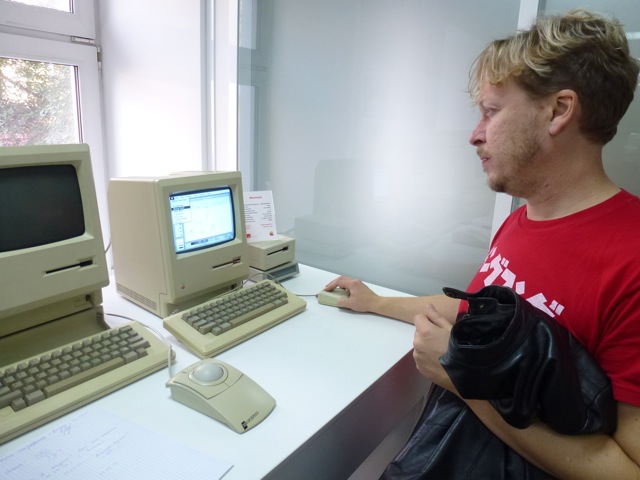
I scanned the collection, and noting that on the far wall there was a glass cabinet, I was curious by what I COULDN'T touch. Inside was a cornucopia of goodies - a pretty complete set of Newtons, including the eMate 300, a pair of Woz's Apple logo sunglasses, effigies of Steve Jobs and interesting Apple merchandise from the 80s, including pins, badges, stickers, earrings and mugs. Also within the same cabinet, a PowerCD and a Bandai Pippin and as I expressed my awe, Andrey simply pointed behind me, where another Pippin was set up connected to a TV with game controller waiting to be put through its paces.
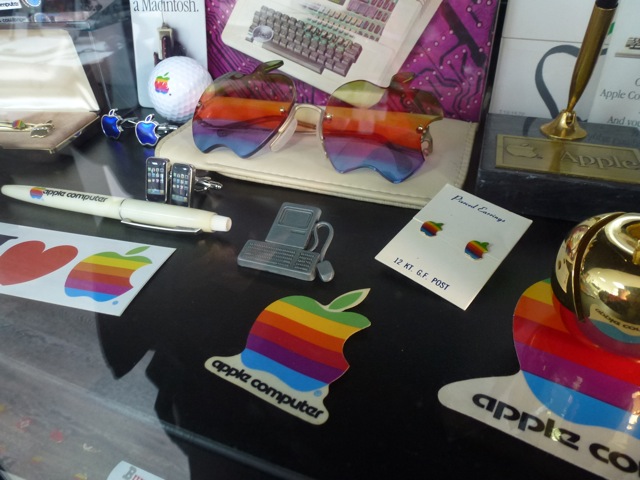
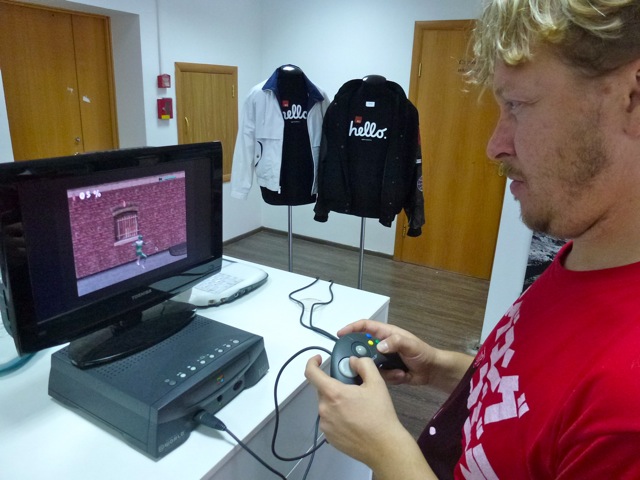
Wow! - I'd never seen one of these in the flesh before. I started playing a Power Rangers style beat-em-up side-scroller game. While I thought it played admirably for the low specs of the machine (a 66Mhz 601 PowerPC off the top of my head) at the same time, it wasn't the smooth, fast, tear-free scrolling console experience gamers should expect after the 16-bit SNES and Genesis/Mega Drive era and I could fully understand why the console never took off. Of course, it wasn't just about the games, as the Pippin billed itself as a device to access the internet, but Apple didn't seem to appreciate what really needed to be done with a console in order to make it competitive with the other systems of the time, chiefly the Playstation I. Like all other Apple computers, it didn't ship with any sprite enabled graphics, nor did it even have any 3D acceleration.
From there, I poured over the impressive collection of PowerBooks - each loaded with different software to give a taster of what these machines could do. I was particularly happy to see the PowerBook 2400, the last sub-notebook Apple did before the MacBook Air, with teeny, tiny keys.
Even by this early stage, Andrey could tell we were enjoying ourselves and gave us a specially made T-shirt as part of the museum each (you can seem them on display as I play with the Pippin in the above image). And his business card - nice!
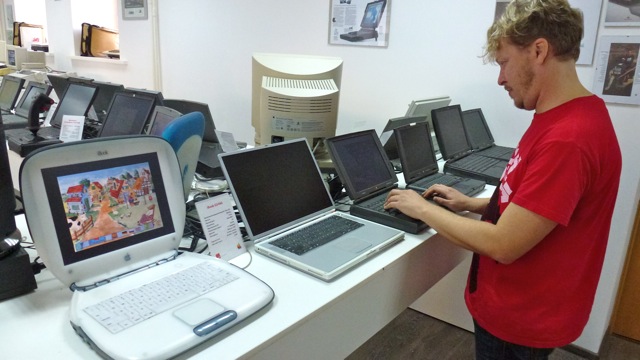
Amongst some of the more modern Macs (PowerPC era) I spied the 20th Anniversary Mac. Never had the chance to take in this model. It was running Wolf 3D, programmed by IIGS veteran ‘Burger' Becky Heineman.
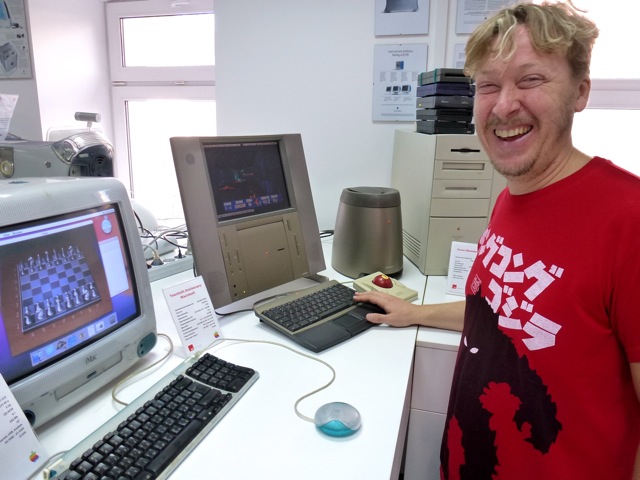
Moving onto the second love of my life, the Apple IIGS. I told Andrey this was my favourite machine and that I had a site devoted to it. The display IIGS was running Karateka at the time, which is a great example of 8-bit software and looked great on the AppleColor RGB monitor, but I felt it could be running something more IIGS specific to better showcase its abilities. I noticed there was an Apple hard drive next to it, and asked Andrey if it worked. It did, at least after we popped open the case to see which slot the SCSI card was in, then making the appropriate slot designation within the IIGS control panel. It booted into System 6.0.1, but alas, that's all that was installed. I set the IIGS back to Karateka. Andrey also had a Woz edition IIGS hidden away, but unfortunately it was quite yellowed.
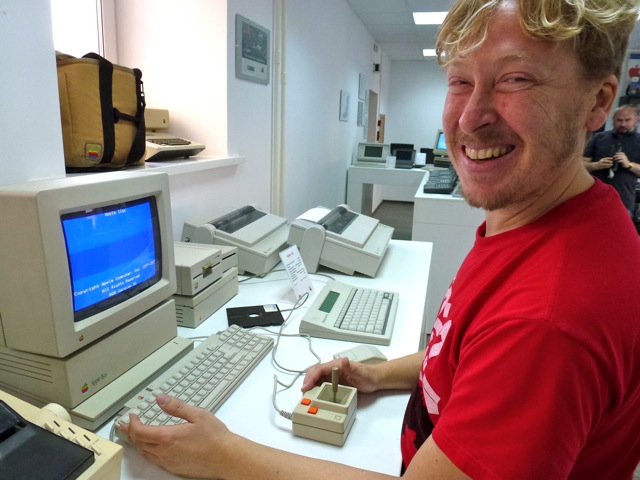
Andrey also brought out another particular prize - a black pizza box with an Apple logo dead to centre on the front. This was a prototype machine that has been guessed at as an ‘Apple Broadcaster' - an early media centre to work with analogue TV, like the MacTV or the all-in-one Mac models that had TV Tuner cards built in, possibly enabling recording and editing all from a TV. Popping open the lid on that revealed memory, video RAM and a slot for...who knows what. Damn cool. Love these black models - reminds me of the abandoned Jonathan computer concept that was documented in the Apple Design Book.
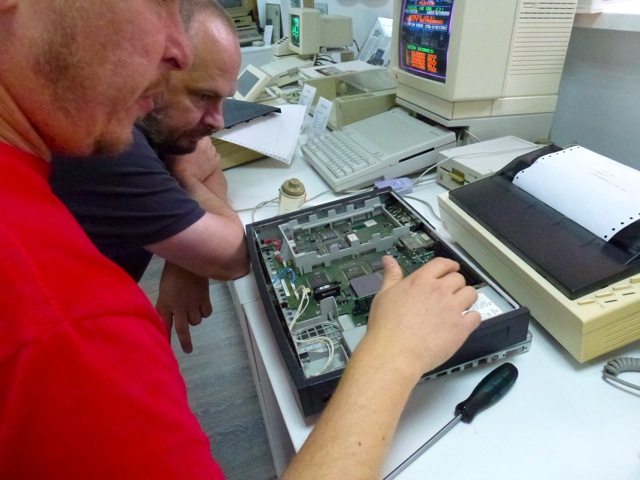
The other glass cabinet was devoted to Apple related books, manuals and boxed software. From ‘out the back' Andrey also brought the first edition of MacWorld, accompanied by the first few issues that followed and a few more items of memorabilia, including the issue of Time Magazine that included the multi-page fold-out revealing the Macintosh in print for the first time.
From there it got even better. Playing around with an Apple IIc+ for the first time (another model not available in Australia) I got Mario Brothers up and running with a game paddle. Next to that, a IIc running CAD Apple hooked up to an Apple Plotter - awesome output! Like a vector display, but in print! And next to that, another IIc with the coveted LCD monitor, enabling the IIc to be portable at a mere 5+kg!
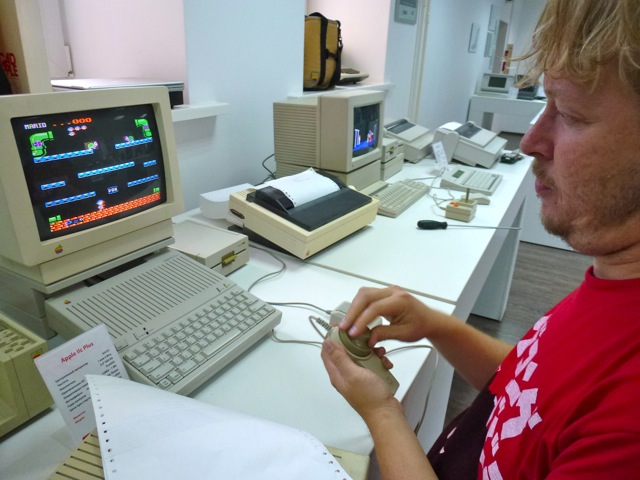
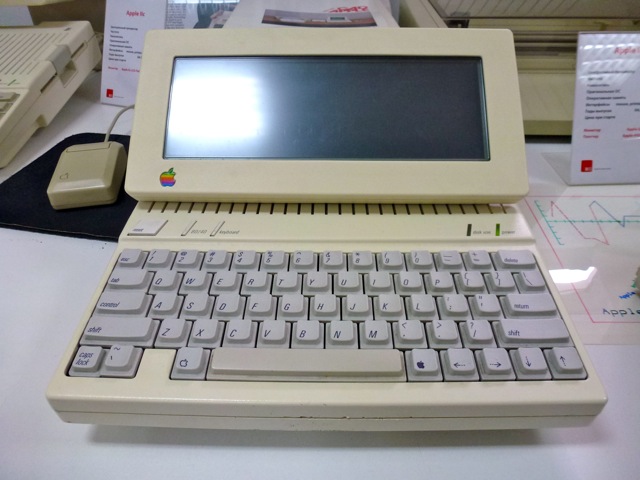
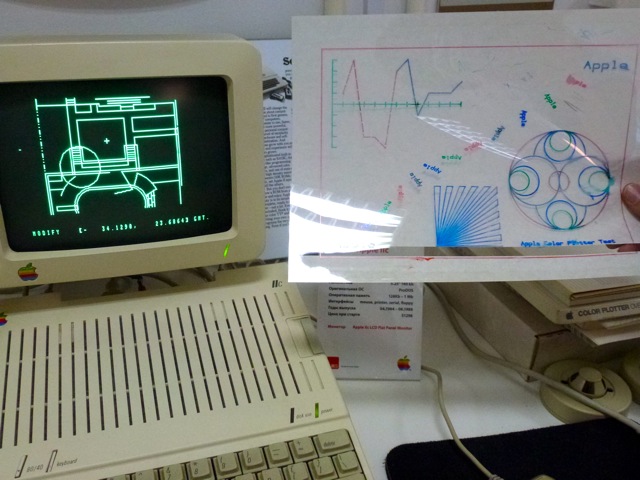
But the real joy came from an Apple IIe. Not just any old beige IIe, but one with a Gibson Light Pen installed. This baby was fun to play with. Hold the pen up to the monitor and space bar toggles when it draws. Awesome sauce. Behold my artistic genius!
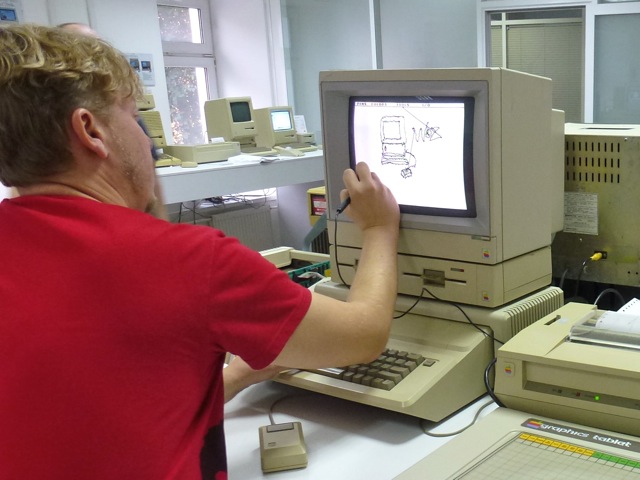
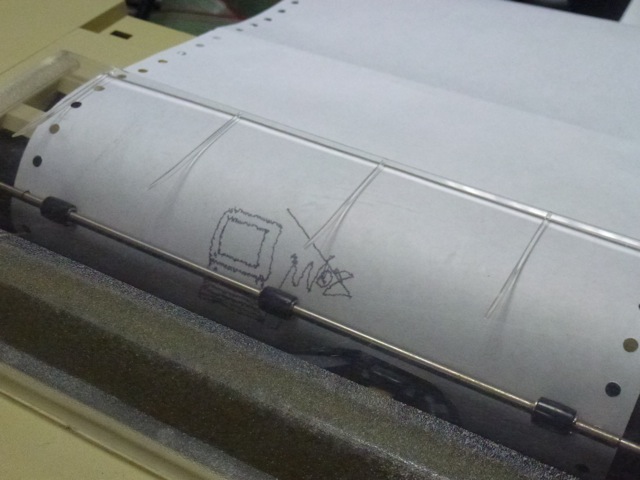
Turning back the years even further, I spy yet even more hitherto untouched Apples - an Apple III, the Bell & Howell ‘Darth Vader' black Apple II+ and what was possibly an original Apple II, running none other than Visicalc, with the boxed package brought out by Andrey, coupled with an Apple Silentype printer.
Boys with toys. It brought back memories of hanging out with friends after school and exchanging whatever you thought was the latest and greatest. Except this was the latest stuff from the 80s. Again, the Apple experience transgresses language barriers and geography. Andrey and I bonded, with but a handful of a sentences spoken between us. Luckily Bronwen was there to photograph the experience. I was having way to much fun to focus on good photography.
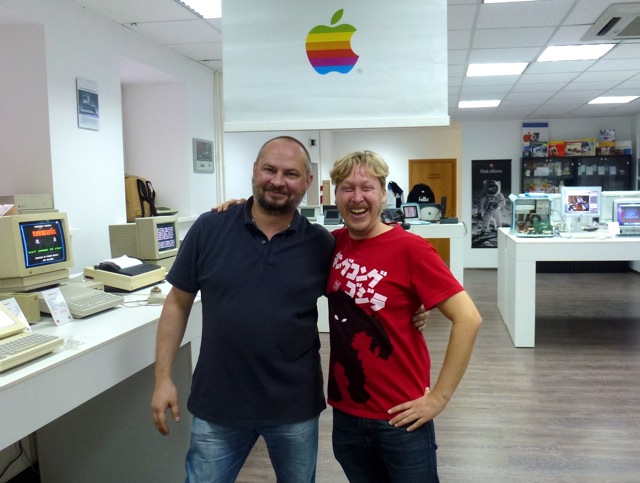
Whenever you're in Moscow (or because of it) visit the Apple Museum at 16 Pestovsky Per., bldg. 1, 2nd floor, m. Taganskaya (Пестовский переулок, д. 16, строение 2) on Saturdays and Sundays from 10am to 6pm.
